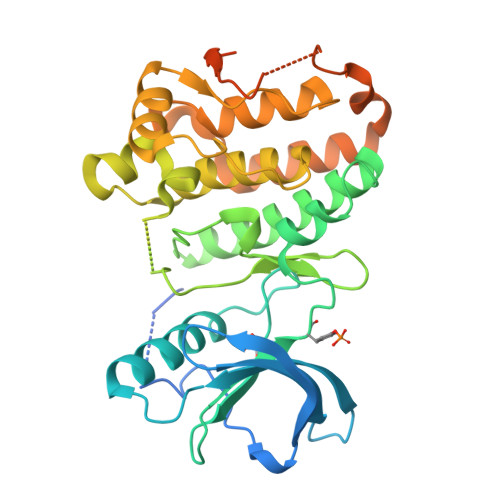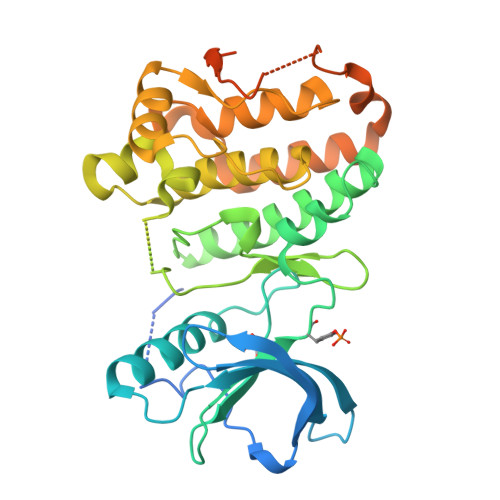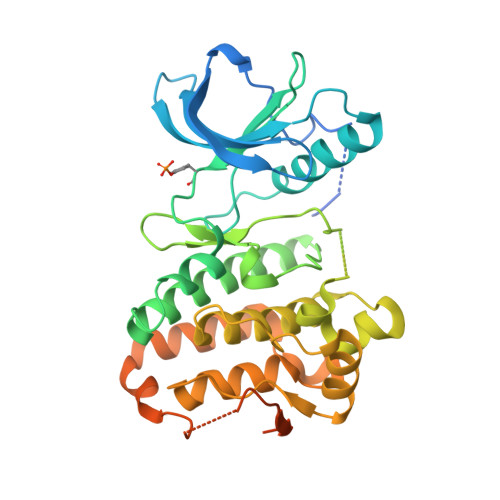Autoregulation by the Juxtamembrane Region of the Human Ephrin Receptor Tyrosine Kinase A3 (EphA3).
Davis, T.L., Walker, J.R., Loppnau, P., Butler-Cole, C., Allali-Hassani, A., Dhe-Paganon, S.(2008) Structure 16: 873-884
- PubMed: 18547520
- DOI: https://doi.org/10.1016/j.str.2008.03.008
- Primary Citation of Related Structures:
2QO2, 2QO7, 2QO9, 2QOB, 2QOC, 2QOD, 2QOF, 2QOI, 2QOK, 2QOL, 2QON, 2QOO, 2QOQ - PubMed Abstract:
Ephrin receptors (Eph) affect cell shape and movement, unlike other receptor tyrosine kinases that directly affect proliferative pathways. The kinase domain of EphA3 is activated by ephrin binding and receptor oligomerization. This activation is associated with two tyrosines in the juxtamembrane region; these tyrosines are sites of autophosphorylation and interact with the active site of the kinase to modulate activity. This allosteric event has important implications both in terms of understanding signal transduction pathways mediated by Eph kinases as well as discovering specific therapeutic ligands for receptor kinases. In order to provide further details of the molecular mechanism through which the unphosphorylated juxtamembrane region blocks catalysis, we studied wild-type and site-specific mutants in detail. High-resolution structures of multiple states of EphA3 kinase with and without the juxtamembrane segment allowed us to map the coupled pathway of residues that connect the juxtamembrane segment, the activation loop, and the catalytic residues of the kinase domain. This highly conserved set of residues likely delineates a molecular recognition pathway for most of the Eph RTKs, helping to characterize the dynamic nature of these physiologically important enzymes.
Organizational Affiliation:
Structural Genomics Consortium, University of Toronto, Toronto, Ontario, Canada.


















